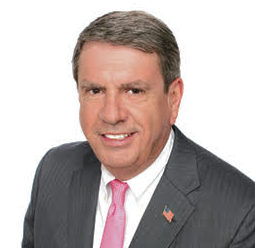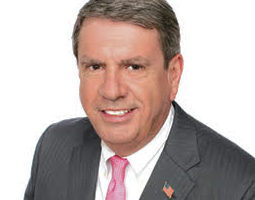MarketInsight | The CoronaVirus

There are more people living in the world today than have ever died.
World War I was an exceptionally bloody affair, killing more than 20 million. For four years death haunted the entrenched battlefields of Europe. In September and October of 1918, the final offenses on the Western Front would bring that war to a close. Those offenses were led by American troops at places like St. Mihiel and the Meuse-Argonne. During that second battle, Sgt. Alvin York became a hero for capturing 132 German soldiers single-handedly. He took on a machine gun nest with his rifle and when he ran out of ammo, he shot six more with his pistol before the remainder surrendered. “A higher power than man guided and watched over me and told me what to do,” he announced at his Medal of Honor ceremony.
At roughly the same time, the City of Philadelphia held a Liberty Bond parade down Broad Street. In Philadelphia, citizens delighted as they watched the long processions of marching bands and floats, interspersed with recent enlistees who would never see combat. What the throngs of spectators did not know was that they were at a greater risk of death than many of the soldiers in Europe.
The Spanish Flu pandemic of 1918 – 1920 was the worst pandemic of the last 100 years. The Flu, helped along by a lack of understanding of epidemiology and armies of soldiers returning home from the close quarters of the battlefield, infected a third of the world’s population and killed around 40 – 50 million. In the end, the Spanish Flu pandemic would kill more people than died in combat during the War. The death total in the United States was approximately 675,000.
Back in Philadelphia, the Flu had just arrived. It spread like wildfire through the exuberant crowd. Within a week 4,500 of them would be dead. Hospitals were overflowing. There was an extreme shortage of nurses. The city’s director of public health called out for “Nurses, more Nurses, and yet more Nurses,” to tend to the sick and dying. A total of 12,000 would die within six weeks — so many deaths that many were buried in mass graves.
At the time, the medical community thought they were combatting a bacterial disease. It was only later that we realized influenza is a virus. But the lessons learned in Philadelphia still guide and haunt us today. The lesson was to keep people apart. It is why our medical leaders are embracing “social distancing.”
Scott A. Grant is a local author, historian, columnist, and speaker. He is president of Standfast Asset Management in Ponte Vedra Beach. He welcomes your comments or questions at scottg@standfastic.com.
Scott Grant’s book, “The Merchant of Death is Dead: True Stories of the Progress of Humanity,” in which he shares some of his favorite columns, is now available: https://tinyurl.com/tn7tj65. Over the last 14 years, Grant has been a regular columnist for two newspapers and has perfected several history presentations. After two years of touring the local northeast Florida civic clubs, museums, and schools, he was asked to produce a book. This is his first publication. He is delighted to share his knowledge of history and investments.




Comments are Closed